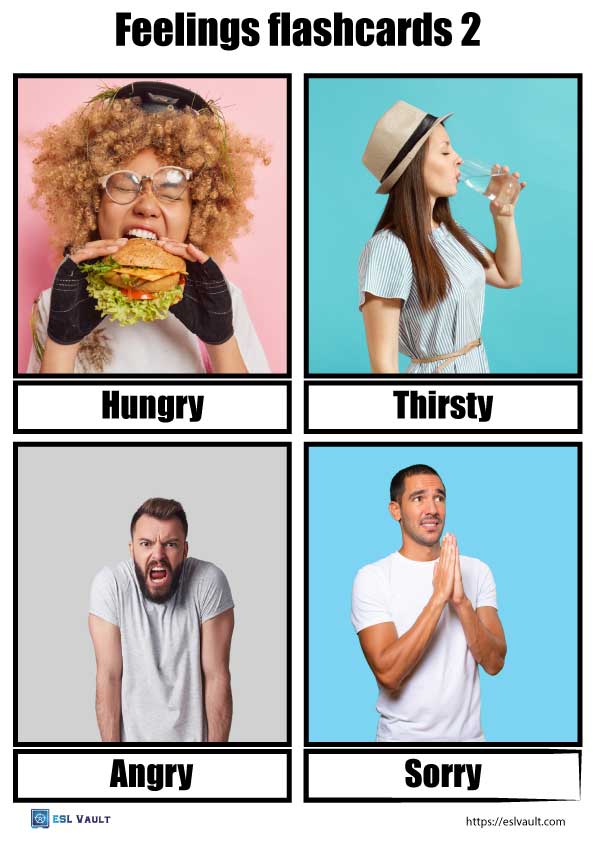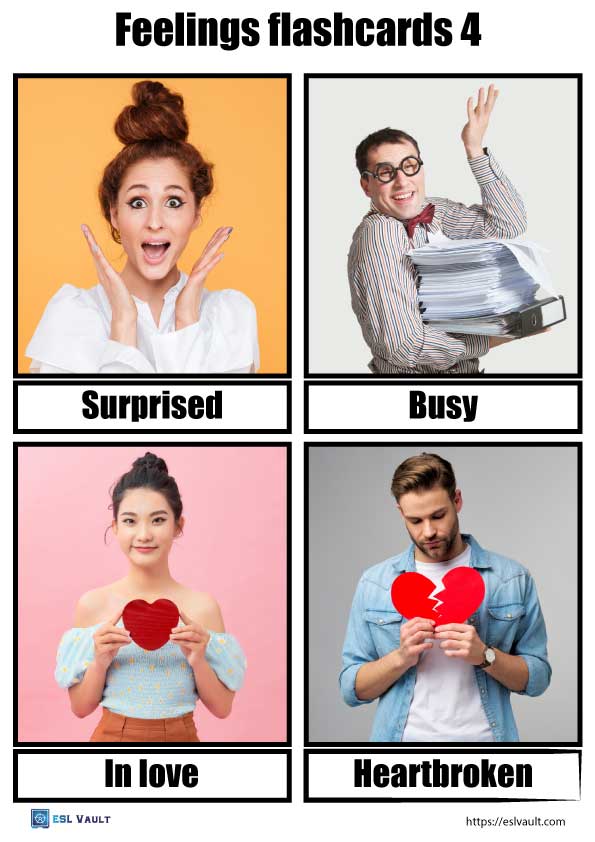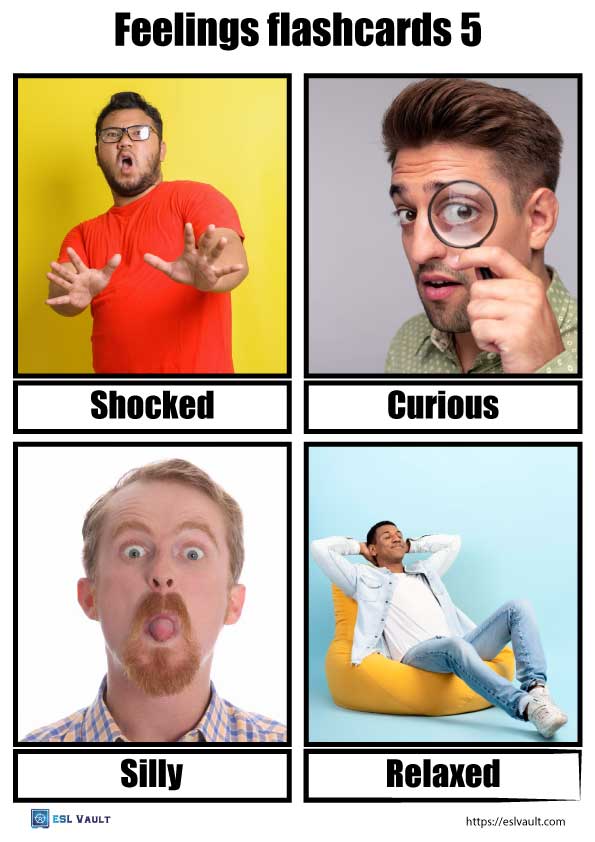Emotions and feelings flashcards
Here are some beautiful feelings flashcards for kids and English language learners. They feature realistic photographs of people showing different feelings. You can use them for a whole range of activities, read below for some cool ideas that you may not have thought of.
There are basic emotions that are great for kids as well as some more complex ones for older learners. You will find what you need for any class or student age group.
The feelings flashcards have 32 emotions that people experience, they are – happy, sad, hot, cold, hungry, thirsty, angry, sorry, confused, worried, sick, shy, surprised, busy, in love, heartbroken, shocked, curious, silly relaxed, bored, hurt, scared, excited, confident, thoughtful, elated, good, embarrassed, annoyed, tired, and nauseous.
Ideas for using the feelings flashcards
Here are some activities that the feelings flashcards can be used for besides basic rote learning.
1 – Charades. This works particularly well with younger English learners. A player is to come to the front of the class, choose a card at random, and then act it out. Looking at the expressions and body language on the emotions flashcards with help them with this.
The aim, of course, is to get the rest of the class or teams to guess which feeling they are trying to show.
2- Matching/Pelmanism. Cut the words and the pictures out separately so that students can try to match them correctly. Note that some of the cards have similar emotions (like happy and good) so you may not want to use them all.
3- Storytelling. This is another guessing game that works well with older classes. Instead of acting out the emotion, players are to tell a short story and others are to guess how they felt at that time.
For example, if a player has the feelings flashcards of relaxed, they might say – “I was laying in a hammock under a palm tree on a beach”. The short stories can be shorter or longer depending on their ability.
4 – Arranging. You can ask learners to arrange the cards in different ways. Some ideas for this include in alphabetical order, in positive or negative emotion groups, and somewhat more challenging as opposite words.
5 – Feelings chart. You can use the picture and word cards to create a feelings chart6. Underneath each emotion, get learners to write what makes them feel that way.
6 – Feelings mobile. Print and cut out the flashcards to make a hanging mobile. Card stock works best for this but you can also glue printed paper to some cardboard if need be. All you will need is a stick or hanger, some string, and sticky tape to make an emotional mobile.
7 – My feelings story. Another story-telling idea. This time ask learners to choose 5 cards of emotions that they felt yesterday or last week. Next, they are to say what happened and why they felt that way.
Related activities
Here are some more useful related activities that you can use with these emotions and feelings flashcards.
First of all, there are the emotions vocabulary worksheets. They involve matching feelings with pictures. There are also a couple of pages there where students can try drawing emotions on blank faces.
For higher-level and older students, there are also some good discussion activities. Have a look at the feelings conversation questions and the questions about body language.











